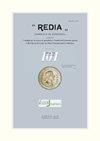树木相关微生境与不同捕集方法捕获大型濒危腐木甲虫的关系
IF 0.6
4区 生物学
Q3 ZOOLOGY
引用次数: 0
摘要
Osmanoderma eremita和Cerambyx cerdo是腐叶甲虫物种,被列入国际自然保护联盟红色名录和欧盟/92栖息地指令。在意大利的几个地方,包括城市和城郊公园,通过适当的陷阱记录了它们的发生,这些公园大多与老树有关。在这项研究中,在卡斯特尔波齐亚诺总统庄园(意大利中部罗马省拉蒂乌姆)的17棵老橡树上测试了陷阱,采样的腐叶甲虫的丰度与生长种群量(GSV)和微栖息地的丰度有关。此外,我们比较了三种不同的诱捕方法:一种是为监测C.cerdo(CC)而设计的诱捕器,另一种是为了监测O.eremita而设计的两种诱捕器,即黑十字窗诱捕器(BCWT)和黑瓶诱捕器(BBT)。我们发现,较大的树木拥有各种各样的微栖息地,特别是洞穴,其丰度与采样标本的数量相关,尤其是埃雷米塔物种。经典陷阱(即CC陷阱和BCWT)和本文引入的BBT变体都能有效捕获大型腐叶甲虫。在这项工作中,我们强调了保护老树对濒危腐叶甲虫发生的重要性,并为(i)扩展腐叶甲虫栖息地偏好的一般知识和(ii)改进新的具有成本效益的诱捕系统变体做出了贡献。关键词:Osmanoderma eremita,Cerambyx cerdo,世界自然保护联盟濒危物种,树木相关的微栖息地,城市和城郊地区,老树本文章由计算机程序翻译,如有差异,请以英文原文为准。
RELATIONSHIP BETWEEN TREE-RELATED MICROHABITATS AND THE CAPTURES OBTAINED USING DIFFERENT TRAP METHODS FOR LARGE THREATENED SAPROXYLIC BEETLE
Osmoderma eremita and Cerambyx cerdo are saproxylic beetle species, included in the IUCN Red List and in the EU/92 Habitats Directive. Their occurrence has been recorded, through appropriate traps, in several localities in Italy, including urban and peri-urban parks, mostly associated with veteran trees. In this study, traps were tested over 17 veteran oak trees in the Castelporziano Presidential Estate (Latium, Rome province, central Italy) and the abundance of sampled saproxylic beetles was related to the growing stock volume (GSV) and the abundance of microhabitats. Moreover, we compared three different trapping methods: a trap designed to monitor C. cerdo (CC), and two traps designed for monitoring O. eremita, i.e., the Black Cross Window Trap (BCWT) and the Black Bottle Traps (BBT). We found that larger trees hosted a great variety of microhabitats, in particular cavities, which abundance was correlated with the number of specimens sampled, especially O. eremita species. Both classic traps (i.e., CC traps and BCWT) and the herein-introduced BBT variants were effective for capturing large saproxylic beetles. In this work, we underline the importance of the preservation of veteran trees to the occurrence of threatened saproxylic beetles, and we contributed to (i) extending general knowledge of the habitat preferences of saproxylic beetles and (ii) improving new cost-effective trapping system variants. Key Words: Osmoderma eremita, Cerambyx cerdo, IUCN threatened species, Tree-related Microhabitat, urban and peri-urban areas, veteran trees
求助全文
通过发布文献求助,成功后即可免费获取论文全文。
去求助
来源期刊

Redia-Giornale Di Zoologia
ZOOLOGY-
CiteScore
1.20
自引率
20.00%
发文量
18
审稿时长
>12 weeks
期刊介绍:
Redia supports its long history of basic and applied research in entomology and invertebrate zoology in the field of crop and forest tree protection responding at the same time to the increasing need of innovation and technological improvement.
 求助内容:
求助内容: 应助结果提醒方式:
应助结果提醒方式:


